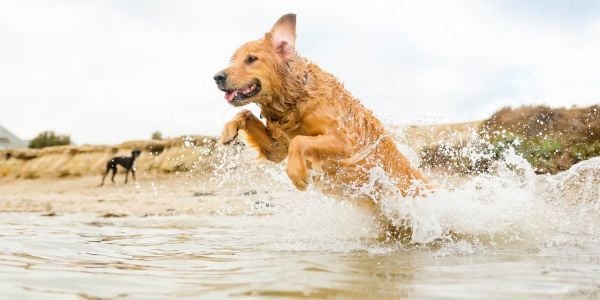If you’ve ever looked into the eyes of a wolf and felt a primal connection or simply marveled at the majestic beauty of this wild creature, then you’re in the right place. Imagine the allure of a wolf paired with the temperament of man’s best friend; this is the magic of the wolf-dog hybrid. These unique creatures are not only captivating but also complex, often misunderstood, and, for some, utterly irresistible.
However, owning a wolf-dog hybrid is not a decision to be taken lightly. These animals have unique needs, both in terms of their care and their environment. This blog post aims to be your ultimate guide on wolf-dog hybrid breeds, providing you with a wealth of knowledge alongside gorgeous pictures to truly get to know these extraordinary animals.
Here, we’ll talk about the fascinating world of 10 specific wolf-dog hybrid breeds, offering essential facts, quirks, and trivia to help you get to know each one better. Whether you’re considering adopting one or simply want to know more, read on for a captivating journey into the wild side of dog breeding.
1. Czechoslovakian Wolfdog
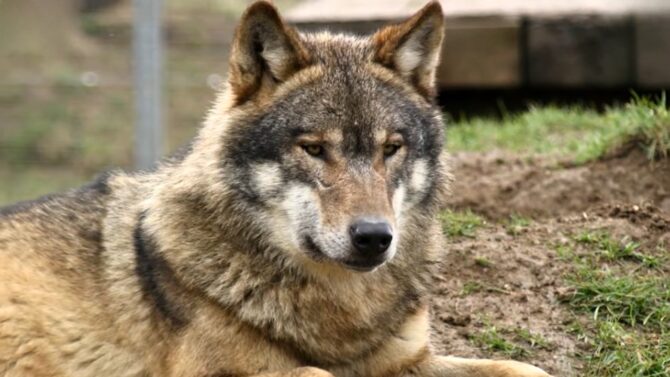
Origin
The Czechoslovakian Wolfdog, often simply referred to as Czech Wolfdog, originated in the 1950s in what was then Czechoslovakia. This breed was initially created for military operations and combines the power of a Carpathian wolf with the trainable qualities of the German Shepherd.
Characteristics
- Temperament: Highly social and intelligent, yet requires rigorous training and socialization
- Color: Usually shades of grey, mimicking its wolf ancestry
- Size: Generally large, ranging between 45 to 60 pounds
- Lifespan: 13-16 years
Care and Consideration
Owning a Czech Wolfdog requires a great deal of responsibility. They need extensive exercise and mental stimulation to remain happy. Their high prey drive also means they may not be suitable for homes with smaller pets. Due to their origin in military training, these dogs may exhibit a strong “pack mentality,” necessitating an owner who can assert themselves as the pack leader.
2. Saarloos Wolfdog
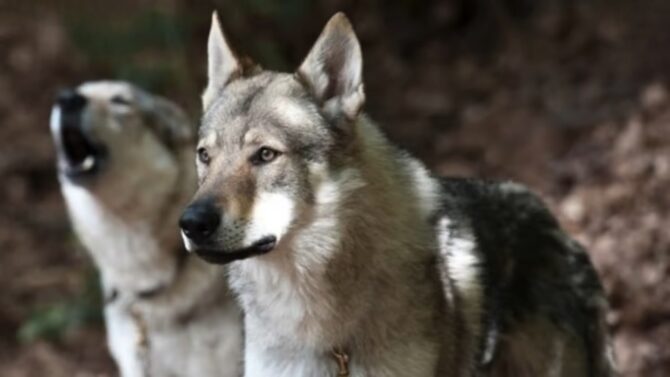
Origin
The Saarloos Wolfdog was created in the 1930s in the Netherlands by a breeder named Leendert Saarloos. His aim was to improve the domestic dog by introducing wolf genes from a Eurasian wolf into the gene pool, mainly using German Shepherds for the mix.
Characteristics
- Temperament: Reserved and cautious, yet extremely loyal to its owner
- Color: A variety of colors ranging from reddish-brown to sable to agouti
- Size: A large breed weighing between 70 to 90 pounds
- Lifespan: 10-12 years
Care and Consideration
Saarloos Wolfdogs are a unique blend of wild and domestic traits. They tend to be reserved and may require time to warm up to strangers. An important note is that they are pack animals and generally do well with a stable family structure. Because of their wolf heritage, these animals need large, secure areas to roam and plenty of physical and mental exercise.
3. Tamaskan
Origin
The Tamaskan originated in the 1980s in Finland, and it was deliberately bred to resemble a wolf as closely as possible. Interestingly, there is no recent wolf blood in the Tamaskan; the breed consists of a mix between the Alaskan Malamute, Siberian Husky, and German Shepherd.
Characteristics
- Temperament: Friendly, intelligent, and incredibly versatile
- Color: Often grey or reddish with a wolf-like appearance
- Size: Medium to large, generally between 55 to 99 pounds
- Lifespan: 14-15 years
Care and Consideration
While Tamaskans are one of the more “domestic” hybrids on this list, they still require extensive exercise and mental stimulation. Their friendly nature makes them suitable for families, but potential owners should remember that these are high-energy dogs that need space to roam. They are also prone to certain genetic conditions, so regular veterinary check-ups are a must.
4. Native American Indian Dog

Origin
Contrary to what the name might imply, the Native American Indian Dog is not an ancient breed but a modern recreation intended to look like the dogs kept by Native Americans. This breed incorporates Alaskan Malamutes, Siberian Huskies, and a variety of other dogs to achieve its unique look.
Characteristics
- Temperament: Intelligent, versatile, and friendly
- Color: Ranges from silver to black and tortoiseshell
- Size: Medium to large with a weight range of 55-120 pounds
- Lifespan: 14-19 years
Care and Consideration
These dogs are known for their intelligence and versatility, often excelling in agility and obedience training. Despite their intimidating look, they are usually good with children and make excellent family pets. They do, however, require a fair amount of exercise and mental stimulation and are best suited for active families.
5. Alaskan Noble Companion Dog
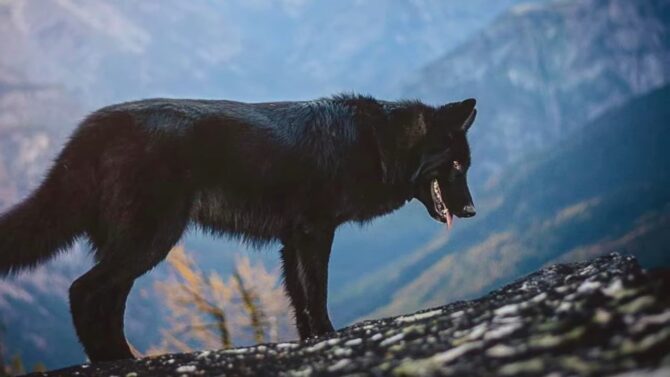
Origin
The Alaskan Noble Companion Dog is a relatively new breed, developed in the 2000s. It’s a mix of Alaskan Malamute, Siberian Husky, and German Shepherd, designed to look like a wolf while having a more manageable temperament.
Characteristics
- Temperament: Gentle, intelligent, and extremely loyal
- Color: Various shades, including black, white, and gray
- Size: Large, ranging from 85 to 110 pounds
- Lifespan: 12-14 years
Care and Consideration
One thing to note is that the Alaskan Noble Companion Dog has a thick double coat that requires regular grooming. Additionally, this breed is not for the faint of heart or inactive; these dogs require plenty of exercise to stay happy and healthy. They are extremely loyal to their families but can be wary of strangers.
6. Lupo Italiano
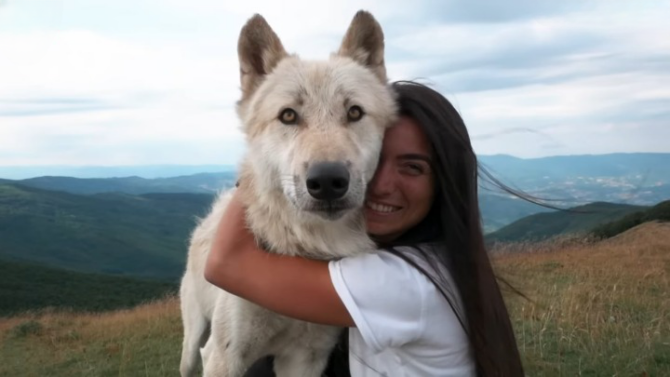
Origin
The Lupo Italiano, or Italian Wolfdog, was developed in Italy in the 1960s. This breed is a cross between a wild Apennine wolf and a German Shepherd and is used primarily in search and rescue operations.
Characteristics
- Temperament: Alert, attentive, and highly trainable
- Color: Usually a mixture of grey and brown, resembling a wild wolf
- Size: Large, weighing between 65 to 100 pounds
- Lifespan: 12-14 years
Care and Consideration
This breed is highly specialized and not commonly found as a household pet. Due to its search and rescue training, it’s incredibly disciplined but requires an experienced handler. Socialization from a young age is crucial for the Lupo Italiano, as it tends to be wary around strangers.
7. Kunming Wolfdog
Origin
The Kunming Wolfdog was created in the 1950s in China, primarily for military use. Although the breed has German Shepherd ancestry, its wolf heritage is evident, particularly in its appearance.
Characteristics
- Temperament: Intelligent, obedient, and known for its keen senses
- Color: Mostly tan and black
- Size: Typically ranges between 66 to 84 pounds
- Lifespan: 11-14 years
Care and Consideration
Kunming Wolfdogs are known for their intelligence and trainability, often excelling in obedience training. However, they are not recommended for first-time dog owners due to their high energy levels and need for rigorous exercise. Also, their keen senses make them highly alert, which means they may not be the best choice for families with young children or small animals.
8. Blue Bay Shepherd
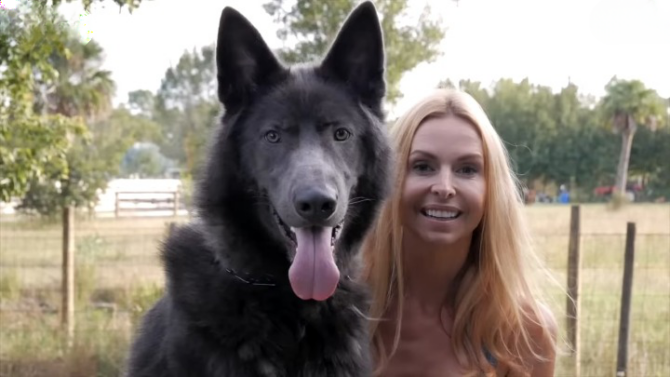
Origin
The Blue Bay Shepherd is an American breed developed in the early 2010s. Created to resemble a wolf but with a gentler disposition, it’s a mix of German Shepherd and Alaskan Malamute with some wolf ancestry.
Characteristics
- Temperament: Affectionate, friendly, and good with families
- Color: Most commonly found in shades of blue
- Size: A large breed, generally ranging between 70 to 85 pounds
- Lifespan: 12-15 years
Care and Consideration
Although they have a somewhat wolfish appearance, Blue Bay Shepherds are known for their gentle temperament. They do well in family settings and are generally good with children. However, due to their size and energy levels, they need ample space to roam and a fair amount of exercise to keep them happy.
9. American Alsatian

Origin
Developed in the 1980s in the United States, the American Alsatian was bred to resemble the Dire Wolf, an extinct species. It is a mix of Alaskan Malamute, German Shepherd, and Mastiff.
Characteristics
- Temperament: Calm, dignified, and good as a companion animal
- Color: Ranges from gold to black and silver
- Size: Large, ranging from 90 to 140 pounds
- Lifespan: 12-14 years
Care and Consideration
Despite its intimidating size and wolf-like appearance, the American Alsatian is known for its calm and companionable nature. It does well in families and is generally good with children. However, potential owners should note that this breed is prone to certain genetic conditions like hip dysplasia and should be screened regularly.
10. Northern Inuit Dog
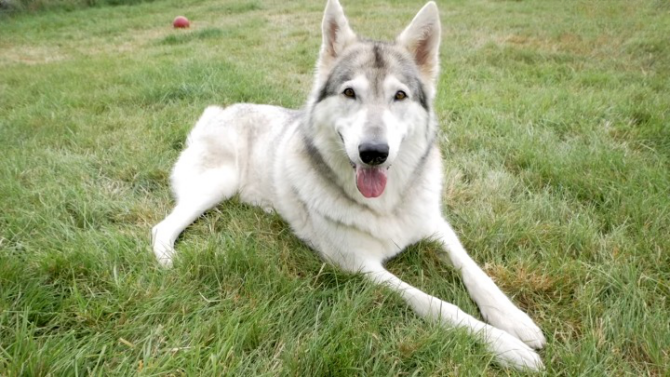
Origin
The Northern Inuit Dog originated in the 1980s in the United Kingdom. This breed was created by mixing Siberian Huskies, German Shepherds, and Alaskan Malamutes, aiming to create a dog that closely resembles a wolf.
Characteristics
- Temperament: Friendly, intelligent, and good with families
- Color: Commonly sable to pure white or black
- Size: Generally large, ranging from 55 to 110 pounds
- Lifespan: 12-14 years
Care and Consideration
Northern Inuit Dogs make excellent family pets and are particularly good with children. However, they require a lot of exercise and mental stimulation to keep them healthy and happy. Potential owners should also be aware that this breed can be prone to hip dysplasia and should undergo regular veterinary check-ups.
Final Words
Wolf-dog hybrids are extraordinary creatures that offer a unique blend of the wild and the domestic. While captivating, they come with their own sets of challenges and needs, requiring owners who are committed, responsible, and well-informed.
From the disciplined Lupo Italiano to the family-friendly Northern Inuit Dog, each breed brings its own distinctive traits to the table. If you’re considering adopting one of these incredible animals, remember that a wolf-dog hybrid is not just a pet but a commitment that requires an in-depth understanding of both its canine and lupine traits. With the right care, however, these majestic animals can become unforgettable members of your family.


